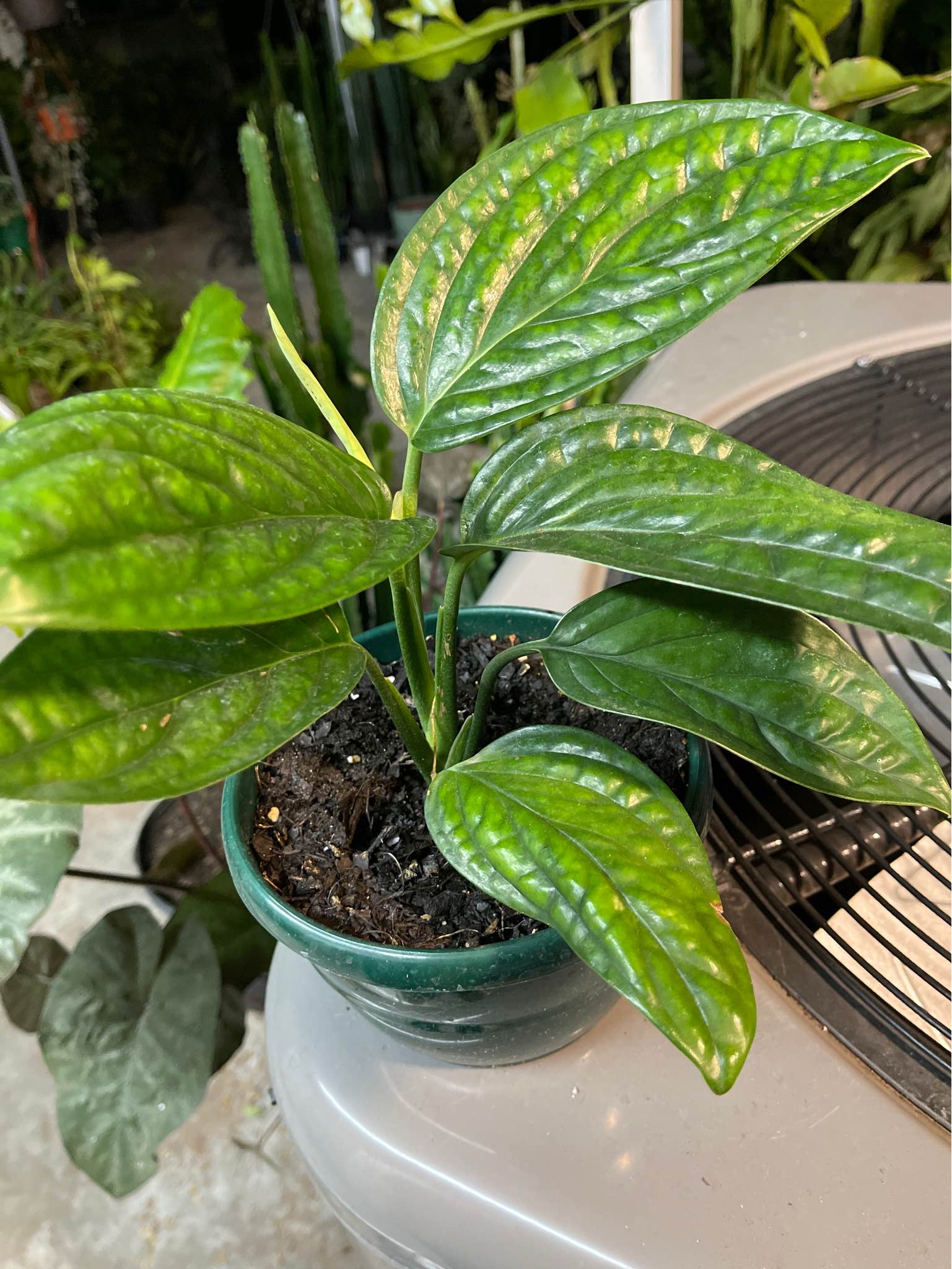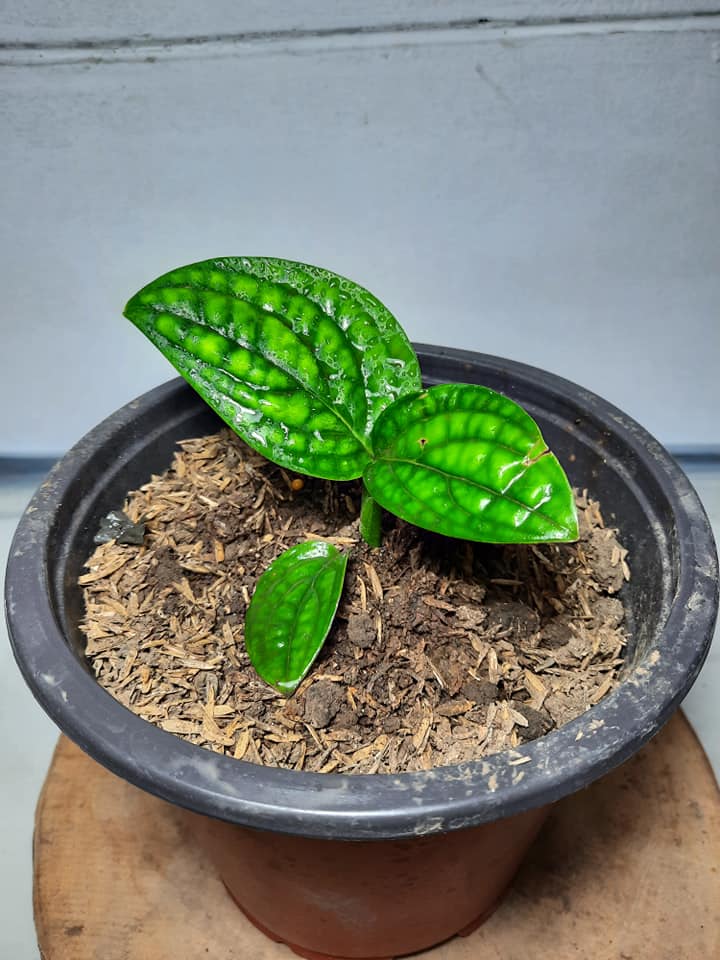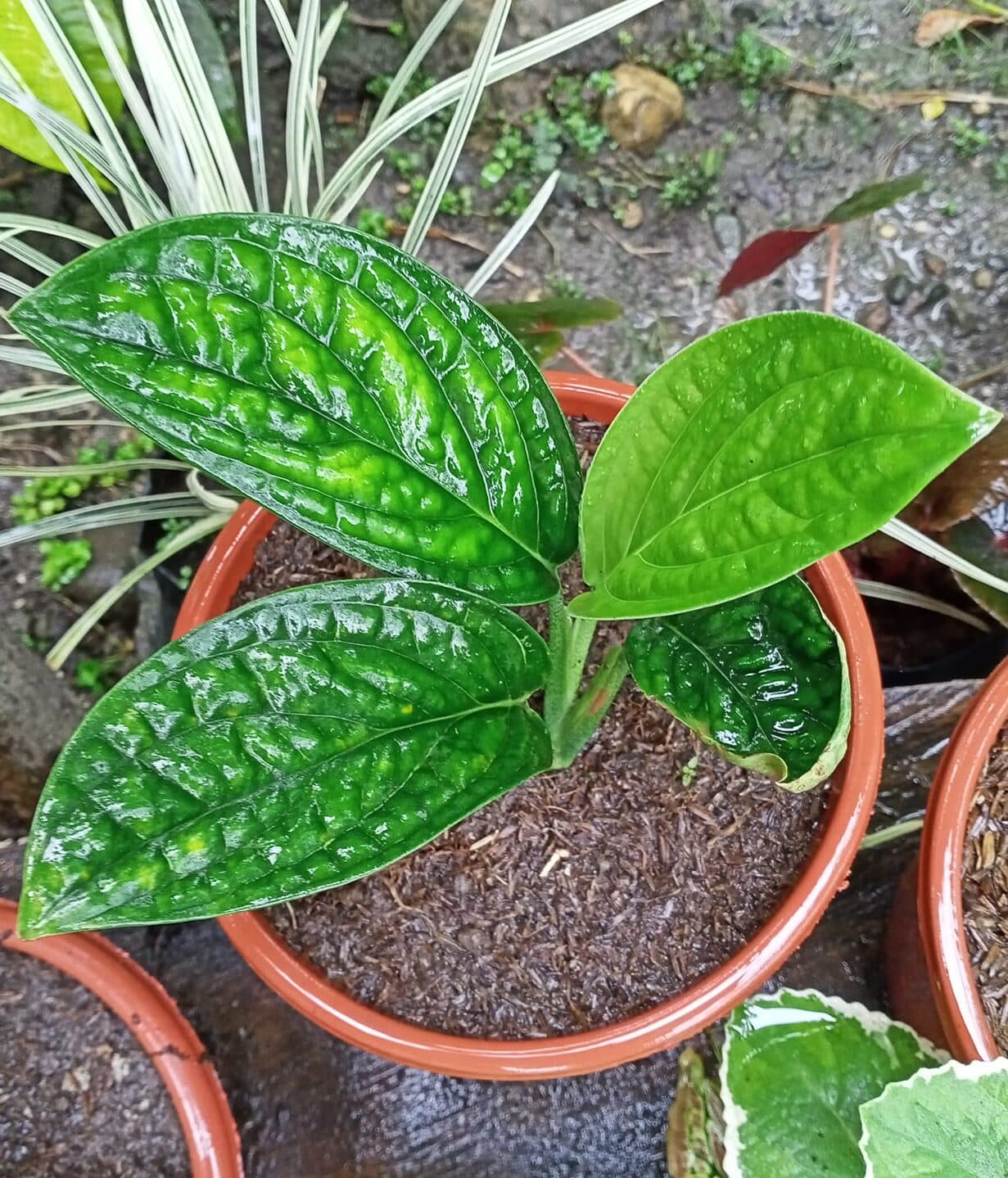Monstera Peru is an easy-to-care plant widely admired for its glossy, dark green, and deeply veined foliage.
Just stick to the below-mentioned tips and tricks to make your Monstera Peru happy.
Table of Contents Show
Monstera Peru Overview
It is a fellow of the arum family Araceae, also known as aroids.

The family contains over 60 species, the majority of which are native to America’s tropical regions.
| Indicator | Identity |
|---|---|
| Common Name | Epipremnum Marble Planet, Green Galaxy Monstera |
| Botanical Name | Monstera peru |
| Origin | Peru and Venezuela |
| Family | Arum family, Araceae (aroids) |
| USDA Zones | 11b to 12 |
| Growth type | Evergreen climbing hemi epiphytes |
| Toxicity | Toxic to humans and animals when ingested |
Where to Buy Monstera Peru?
Carefully read seller policies and reviews to ensure you get a decent product and have viable alternatives if the plant is in poor condition.
Here are some of our favorite houseplant shops:
| Places to Buy | Delivery Service |
|---|---|
| In Succulent Love | You will receive an email confirmation with the tracking. |
| Amazon | Within 4-8 days |
Monstera Peru Care Guide
Monstera Peru necessitates intermediate care to ensure that it survives and thrives.
| Requirements | Optimum Conditions |
|---|---|
| Light requirements | Medium to bright, indirect light |
| Temperatures | 65°F to 80°F (18 to 27 ºC) |
| Humidity | 50% or above |
| Potting medium | Well-drained, slightly acidic to neutral, organic-rich soils or potting mix |
| Watering frequency | Medium, letting a few top 2 to 3 inches dry before watering again |
| Fertilizer | Well-balanced, water-soluble liquid fertilizer |
| Re-pot | Once in two to three years |
| Propagation | Stem cutting and root division |
| Pest | Mealybugs and spider mites |
| Diseases | Rhizoctonia Root rot, Phytophthora Root Rot, and Pythium Root Rot and Bacterial leaf spot |
1. Sunlight and Temperature
It is beneficial to showcase the plant, like most Monstera plant varieties, in a region where sunlight can indirectly impact the plant.
Extreme temperature brings about stunted growth, yellowing, and drooping foliage.
Similarly, subjecting the plant to direct sunlight can induce charring and withering of the foliage.
The leaves of this plant will quickly damage if exposed to direct light for more than a couple of hours (1 hour of morning direct sunlight is fine).
However, cold stress makes the cell components freeze, leading to the cell’s death.
Tips to Provide Sunlight & Temperature Properly
- Place the plant in a window where it will receive indirect sunlight.
- This plant does best as an indoor plant placed in bright indoors or beside a south-facing window.
- You can also get a heating pad for your plant if you are worried that the cold might damage your beautiful Monstera.
- Mist your plants frequently during the summer season.
2. Water & Humidity
Generally, during the hottest months of the year, you should water your Monstera peru about twice a week and as little as once every two weeks throughout the colder season.
There is, nevertheless, an efficient way to identify hydration needs. The two approaches given below are the most effective.
Overwatering invites bacterial and fungal invasions, and the plant starts to wilt, droop, and rot.
And stunted growth, yellowing, and dropping foliage are the signs of underwatering.
Improper humidity is also a leading cause of yellowing, drooping, shriveling, and plant rotting.
Tips to Provide Proper Watering & Humidity
- Use a soil moisture meter to assess the moisture in the soil.
- Mist the plants frequently if the humidity of your surrounding is low.
- You can use a Hygrometer to know about humidity percentage.
- Increase the watering frequency during the hot days.
- Place the pot in a water-filled pebble tray.
3. Soil & Fertilization
Monstera Peru grows best in well-drained, oxygenated soil that is slightly acidic to neutral (pH 5-7.5) and rich in organic matter.
Take a soil-free mixture like 5:1:1 (5 parts orchid bark, 1 part sphagnum moss, 1 part perlite) or pre-mixed aroid soil.
Monstera Peru should be fine as extra moisture drains well and plenty of breathable air enters the roots.
Alternatively, you can use Sun-gro horticultural potting soil or Organic Potting Mix.
Unfortunately, inadequate feeding results in your Monstera’s yellowing, drooping, and stunting.
Whereas excessive fertilizers disturb the plant’s growth, and the plant shows symptoms like withering, yellowing, and dropping of foliage.
Tips to Provide Soil & Fertilization Properly
- Furnish your plants with Osmocote plant fertilizer during the growing season.
- Dilute the fertilizer to half-strength and apply it while watering once or twice a month during the warmer months.
- However, avoid fertilizing your plants during winter, as they move to dormancy.
- You can use slow-release granular plant nutrients if you don’t want to nourish your plants regularly.
- Don’t forget to water your plant one day before fertilization.
4. Potting and Re-potting
Monsteras do not have a deep root system; hence, regular re-potting is unnecessary.

Choose a planter 2 to 3 inches larger in diameter when re-potting. It should also be equipped with drainage holes.
Also, wait until spring to re-pot your houseplants, i.e., invariably re-pot your houseplants during the growth period (spring or summer).
Clay pots or terracotta pots work best for Monsteras as they allow air exchange and evaporation of excess water, but remember that this house plant climbs too.
A floating basket allows the plant to grow naturally without using a pole, wooden stick, or moss.
If the roots emerge from the drainage holes or the soil dries quickly after watering, realize you must repot your Monstera.
Tips to Repot Monstera Peru
- Give your Monstera a nice soak for a couple of days before repotting.
- Loosen the soil by gently tapping on the bottom or sides of the pot.
- Slide the plant out of the soil and set it aside.
- Trim away any slimy, mushy, or dark brown/black roots with pruning shears.
- Place small stones or pebbles on the bottom of the pot and fit it halfway with its ideal mix.
- Place the plant in the center and fill the sides with potting mix (not up to the top).
- Remove the accumulated water and place your plant in a warm, indirect light location.
5. Occasional Pruning
It is smart to prune the plant regularly to keep it neat and attractive and contribute to its overall health.
When left unpruned outside, the plant can grow 20 feet long.
Pruning is essential to remove damaged and microbe-infested leaves and other plant parts.
The major pests irritating your Monstera are Mealybugs, Thrips, Spider mites, and Scales.
Besides contributing to pollination, these organisms cause serious hazards to your plants, like wilting, discoloration, and dropping of leaves.
And the major pathogens to which Monsteras are susceptible are Pythium spp., Phytophthora spp., and Botrytis spp.
You need some pruning equipment like shears, baskets, and gloves.
Inspect the damaged parts and prune them accordingly.
Practical Solutions for Pests & Diseases
- Spray neem oil solution on Monstera Peru. Make sure to spray it in all the nooks and corners.
- Use organic insecticides like horticultural oil.
- Wipe the insects off using isopropyl alcohol.
- Also, make sure to avoid overwatering in the future.
- Clean the bug off the plant with a cotton tip dipped in diluted alcohol.
Monstera Peru: All About Growth Rate
As a semi-epiphyte, this species grows in a creeping pattern and will vine onto another plant for support and develop onto trees.
This is a one-of-a-kind and lovely member of the Monstera genus. It has large, shiny, dark green, grooved leaves that are compact and sturdy.

The plant’s leathery leaves are spaced about 2 inches apart.
This fast grower in indoor settings reaches an average height of 35 cm. An adult plant can grow up to 6 meters tall in optimal circumstances.
Monstera leaves range in length from 4 to 9 cm.
Propagation Methods for Monstera Peru
Stem cuttings are the most common propagation method for Monstera Peru. Although there are other options, like root divisions, this is the simplest.
1. Stem Cuttings
- Begin by selecting a healthy stem with at least two leaves. The stem should be long enough to dip into water or stick out of the soil.
- Snip the stem below the node with a sanitized pair of scissors or pruning shears and leave it for a few days.
- Fill a small pot halfway with a well-draining potting medium. After the cutting has been rooted, you will transfer it to this location.
- Move it to the peat-based soil once the roots have grown to about an inch or two in about a month.
- Keep the plant in a warm, humid environment with adequate watering. Also, ensure that there is plenty of indirect light.
- Gently pull on the cutting after 4 or 5 weeks to see if it has rooted. It is a good sign if it resists.
However, don’t pull too hard because the roots are still young and haven’t established themselves.
2. Root Division
- Remove the plant from the pot. You can soak the plant overnight to help loosen the soil.
- Check for suckers or plant bodies that have independent root systems.
- Cut and separate the plants with roots using a sterilized pair of scissors. If the plants or suckers do not have roots, they will not make it.
- Plant these divided Monstera Peru in different containers using a fresh potting mix.
- Place them in indirect light and maintain a good watering schedule.
Toxicity of Monstera Peru
According to ASPCA, the Monstera Peru plant, like its relatives, is toxic. They can trigger an allergic reaction in the eyes and throat if consumed.
Aroids like this one constitute oxalic acid, which can irritate your pet’s mouth and throat if he nibbles on them.
Inflammation may occur in exceptional instances, necessitating medical intervention, but this is unlikely.
Once the burning sensation begins (after the first few bites), your pet will likely determine it’s not worth it.
If your pet or child chews on this plant, the insoluble calcium will become embedded in their oral mucous membrane, causing severe irritation and burning.
If children and pets have ingested the plant, immediately contact the following:
- Animal Poison Control Center at (855) 764-7661.
- National Capital Poison Center at 1-800-222-1222.
FAQs about Monstera Peru
Is Monstera Peru Rare?
Monstera Peru is, indeed, a rare species. Monstera Peru shares the same rarity as Monstera Siltepecana (its nearest relative).
Why is my Monstera Peru Curling?
When the Monstera Peru curls, you do not properly water the plant. Attempt to water the plant and retain the soil moist at all times.
From Editorial Team
Conclusion!
Monstera Peru is a great place if you are looking for a peculiar and one-of-a-kind plant.
However, furnish them with all of their favorable environments.


